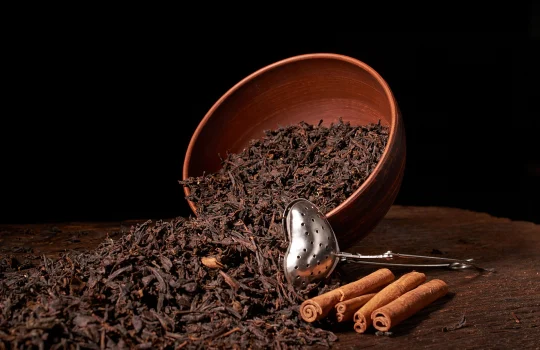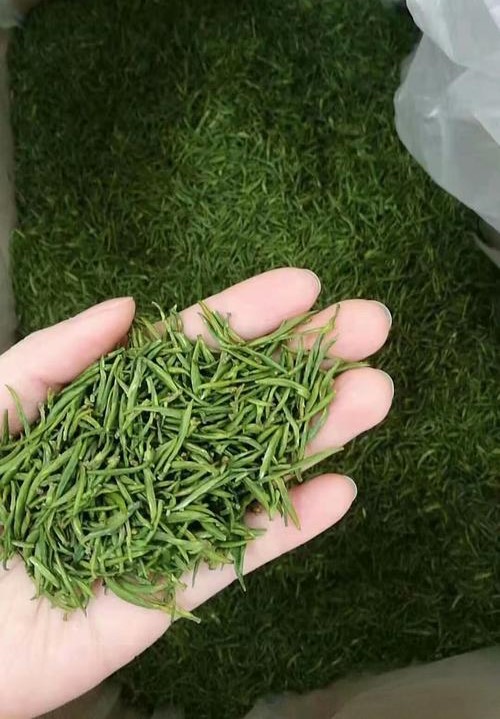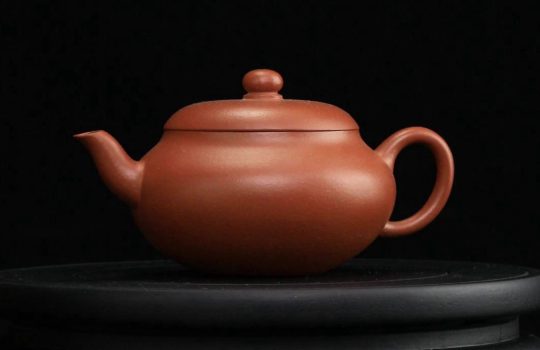Taiping Houkui Origin: The Xinming, Longmen, and Sankou areas of Huangshan City, Anhui Province.
Quality Characteristics: This Chinese tea has a flat, straight appearance, with two leaves embracing a bud, spreading out like a orchid. It is covered in white downy hairs, with green veins tinged with red, commonly known as ‘red silk threads,’ giving it a pleasant and elegant appearance.
Tea Colour: Clear and bright green.
Detailed Introduction to Taiping Houkui
Taiping Houkui is a pan-fired green tea, distinguished by its unique colour, aroma, taste, and shape, with the characteristic of ‘swords and spears gathering, dragons soaring and phoenixes dancing.’ It includes three categories: Houkui, Kui Jian, and Jian Cha, with Houkui being the finest. Taiping Houkui has a strong connection to monkeys, with its shape described as ‘Houkui with pointed ends, neither scattered nor curled, nor rolled at the edges.’ When brewed in a cup, the buds and leaves form blossoms, either suspended or sinking, in the clear, tender green tea broth, resembling many little monkeys playfully teasing you. Tasting it reveals the essence of ‘the first infusion is fragrant, the second is rich, and the third and fourth infusions still retain a subtle aroma,’ with a unique ‘monkey charm.’
The taste of Taiping Houkui
When smelled, it has a subtle fragrance; when tasted, it is rich and refreshing, with an endless aftertaste. One can experience the essence of ‘the first infusion is fragrant, the second infusion is rich, and the third and fourth infusions still retain a subtle fragrance,’ with a unique ‘monkey charm.’
Detailed description of the appearance of Taiping Houkui
Dry tea appearance: The unique feature of Taiping Houkui is its large size, with two leaves and one bud, and leaf length reaching 5–7 centimetres, making it difficult for other teas to be mistaken for it.
Leaf base: After brewing, the buds and leaves of Taiping Houkui form plump, blooming clusters resembling white orchids about to bloom. This is a hallmark of the premium grade, with other grades differing significantly in shape. Colour: The leaves are uniformly dark green, appearing almost black in shaded areas and vibrantly green under sunlight, with no hint of yellowing. The fragrance persists even after the fourth infusion; those that do not are counterfeit. Durability: Tai Ping Hou Kui is more durable than ordinary green tea, with a “three
Taste: Tai Ping Hou Kui has a fresh and crisp taste with a sweet aftertaste, typically featuring a orchid-like aroma. Even when brewed with an excessive amount of tea leaves, it remains free of bitterness or astringency. Authenticity: Tai Ping Hou Kui has a limited production volume, and the premium grade is extremely rare. Counterfeits are prevalent, so when purchasing, it is essential to verify the trademark and choose reputable channels. Products from the Huangshan origin are generally preferred.
Storage Methods for Taiping Houkui
Seal tightly, store in a cool, dark place, keep dry, and avoid odours. Typically, Taiping Houkui is packed in high-density, high-pressure, abrasion-resistant, odourless food-grade packaging bags, then stored in the freezer or refrigerator compartment. This method ensures long-term preservation, but the bag must be sealed tightly to prevent moisture or odour absorption.
Health Benefits of Taiping Houkui Tea
The tea contains various organic compounds such as caffeine, tea polyphenols, proteins, amino acids, fats, and organic acids, as well as 28 inorganic nutrients including potassium, sodium, magnesium, and copper. The combination of these chemical components is highly balanced, providing benefits such as strengthening the heart, relieving spasms, and relaxing smooth muscles. It can relieve bronchial spasms, promote blood circulation, and is suitable for conditions such as bronchial asthma and myocardial infarction.
Brewing Techniques for Taiping Houkui
When brewing, it is best to use a tall glass cup. Take 3–5 grams of tea leaves, place them in the cup with the roots facing downwards, and then pour in 90°C boiling water. Add one-third of the water first, wait for 1 minute until the tea leaves are fully infused and unfurled, then add the second portion of water. Wait for 3–5 minutes before drinking.
The Story and Origin of Tai Ping Hou Kui
Long ago, a mountain villager was picking tea in the mountains when he suddenly caught a whiff of a refreshing fragrance. He searched carefully and discovered several clusters of tender green wild tea plants growing in the crevices of a rugged cliff. Since there were no vines to climb and no path to reach them, he reluctantly left. A few days later, the villager devised a method to harvest the tempting wild tea from the crevices. He trained several monkeys, and during the tea-picking season, he would send these monkeys to climb the rocks and pick the tea leaves. After tasting this tea, people praised it highly, calling it the ‘king of teas.’ Since the tea was picked by monkeys, later generations named it ‘Monkey King.’




